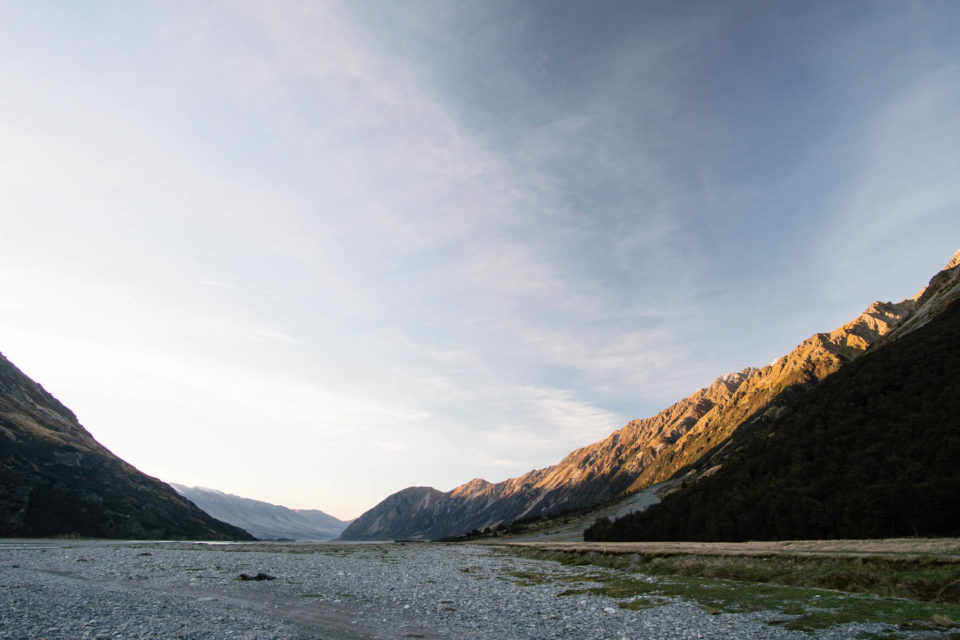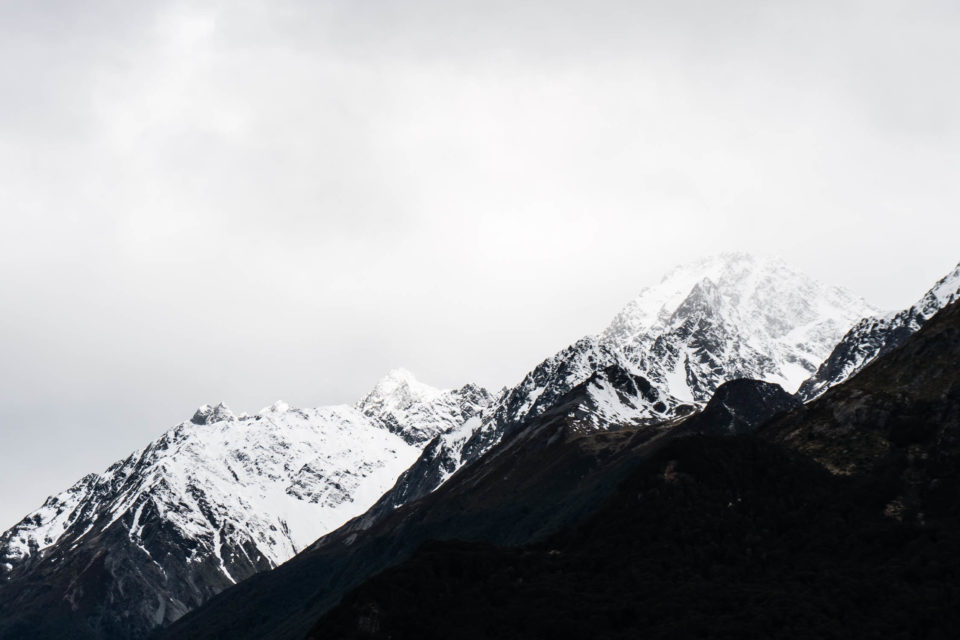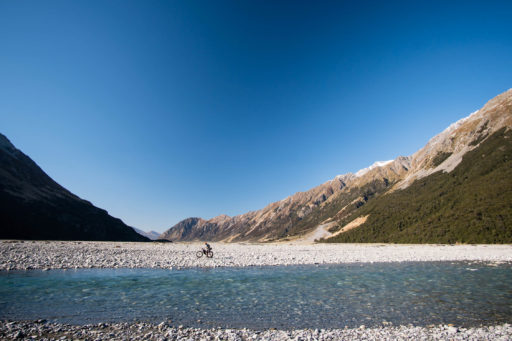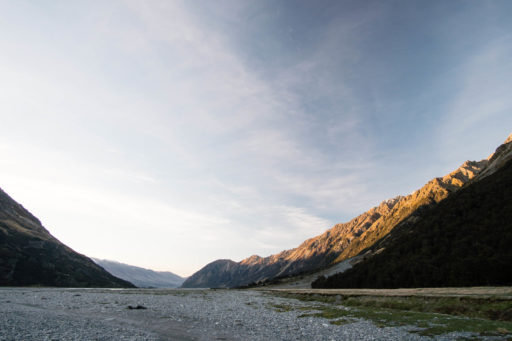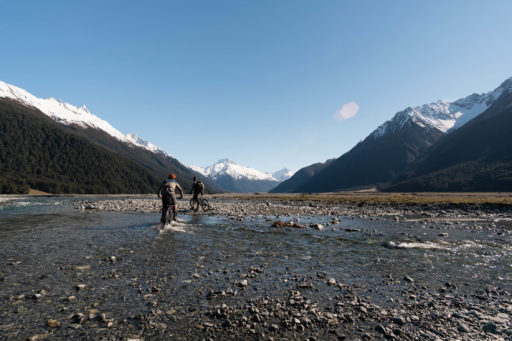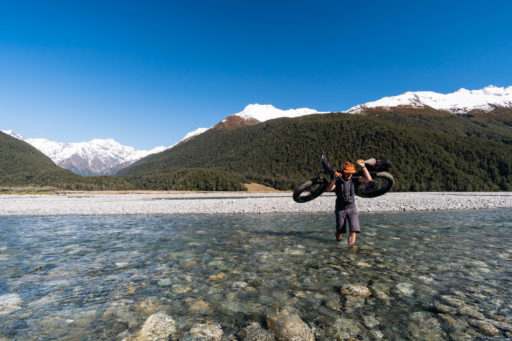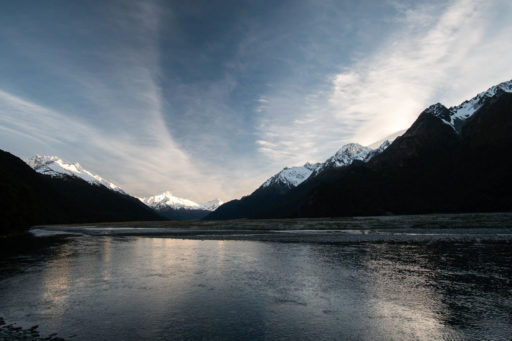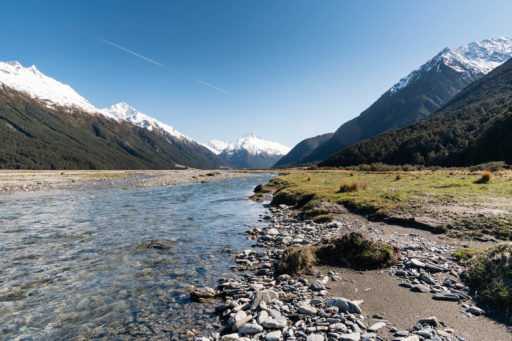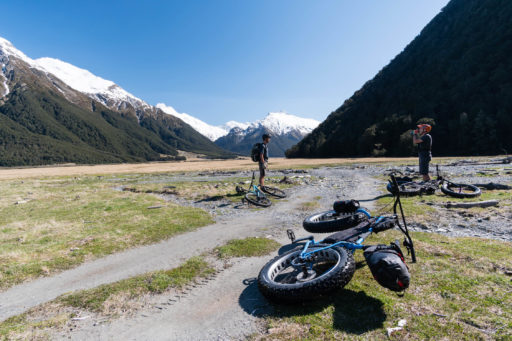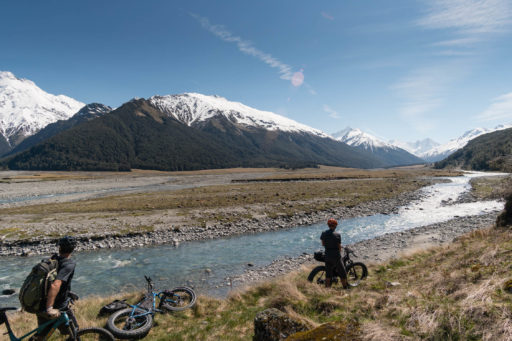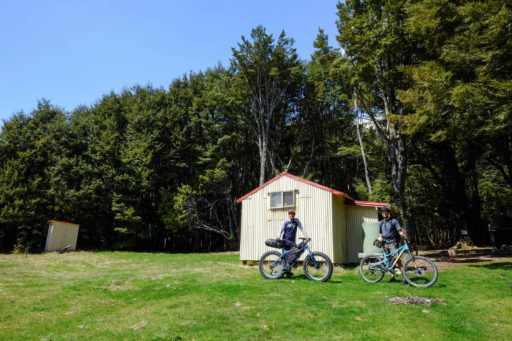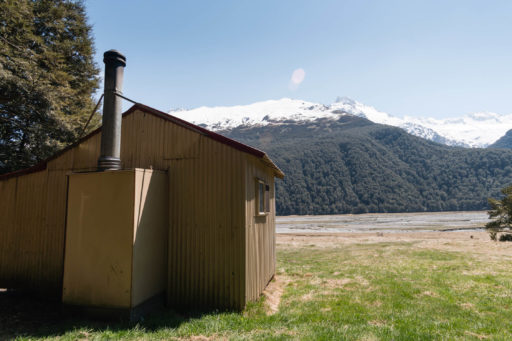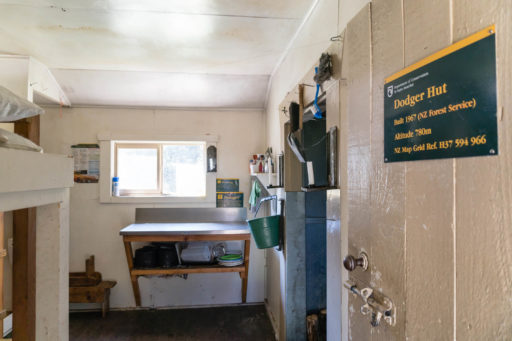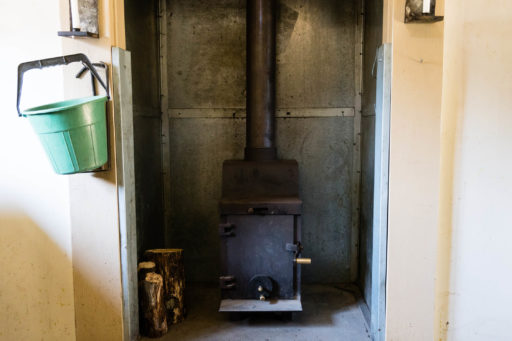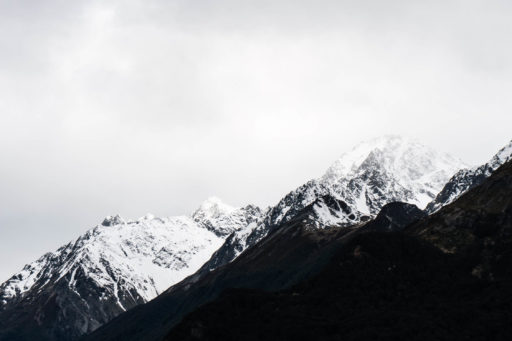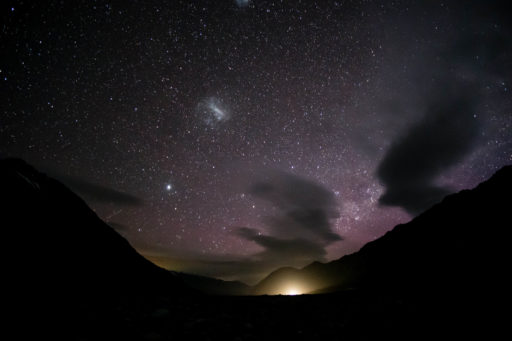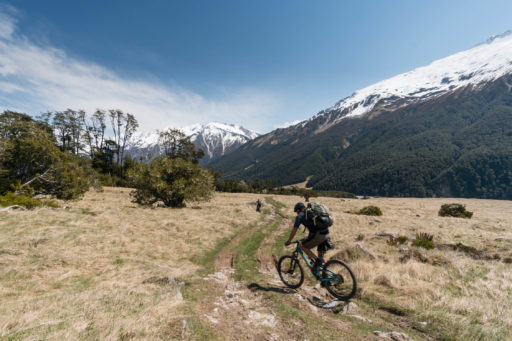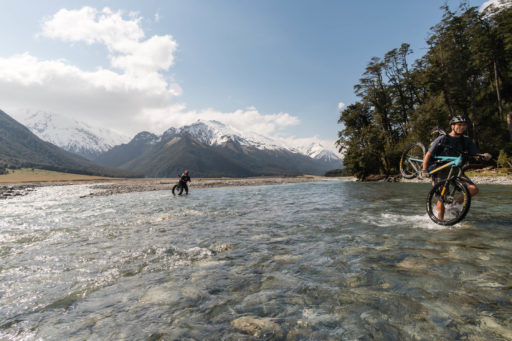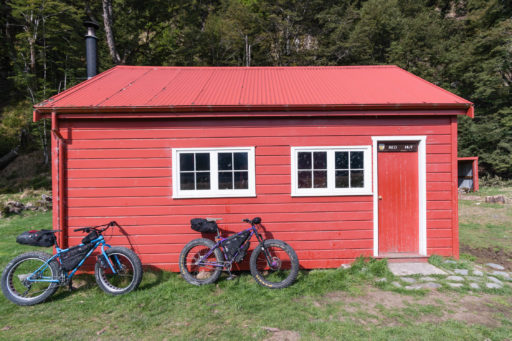Hopkins Valley Overnighter
Distance
41 Mi.
(66 KM)Days
2
% Unpaved
100%
% Singletrack
0%
% Rideable (time)
80%
Total Ascent
2,335'
(712 M)High Point
3,360'
(1,024 M)Difficulty (1-10)
6?
- 4Climbing Scale Fair57 FT/MI (11 M/KM)
- -Technical Difficulty
- -Physical Demand
- -Resupply & Logistics
Contributed By
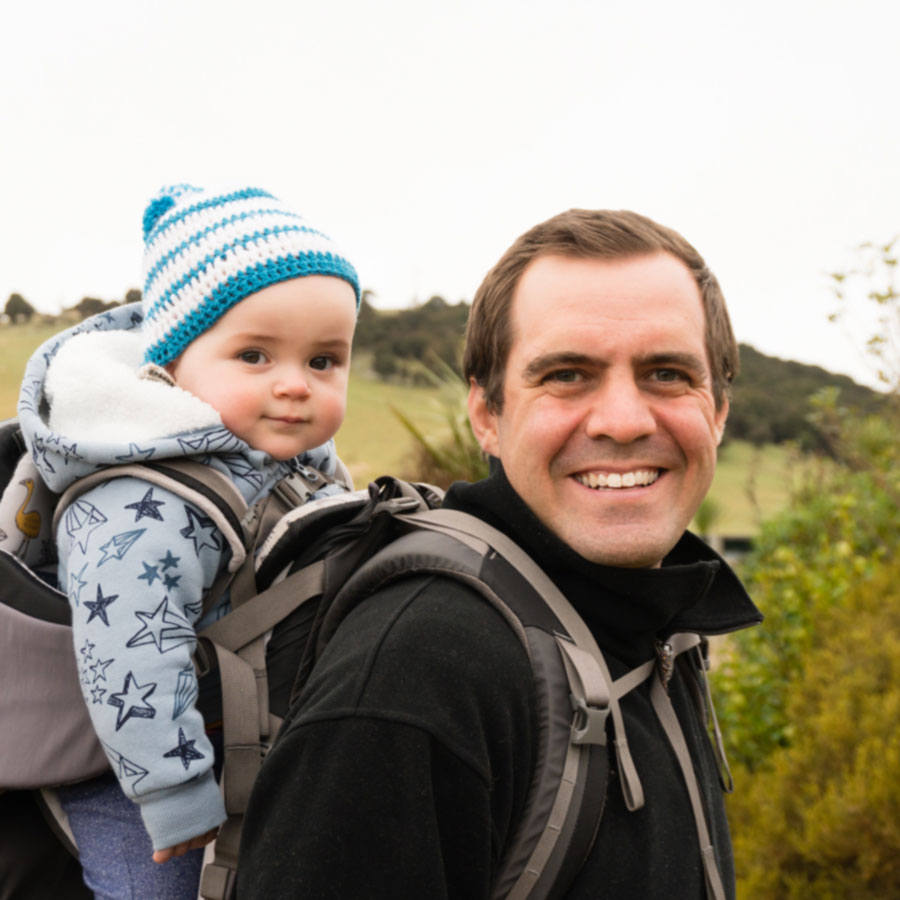
Rory Mearns
Guest Contributor
Rory is a software developer based in Dunedin, New Zealand, who balances out his time in front of the computer with pedaling adventures around the country on his Surly Ice Cream Truck.
Hopkins Valley is a super flexible overnighter that can be tailored to any skill level, and is a great way of experiencing the beauty of New Zealand’s South Island. A few hours drive from the Southern adventure capitals of Queenstown and Wanaka, this ride will take you through spectacular alpine scenery – mountains, river and beech forest – and you’ll witness the best of New Zealand’s night sky. Expect to encounter a few different types of terrain: long easy stretches of grassy meadow are common in the lower reaches; a rough, braided riverbed and its associated crossings; a grassed shingle fan that you can choose to go over or around; and the gnarly banks of a narrow river as the final push. It is a popular place with local hunters, as well as hikers and climbers looking to avoid the major tourist spots.
Riders follow a 4WD track that is relatively well established across the grassy sections of the trail. Crisscrossing up the river the tracks come and go, and you will likely find yourself breaking your own trail through a maze of cobbles, boulders and icy river crossings. A fat bike isn’t a requirement, but larger tires are definitely an advantage. Six huts dotted along the valley give you a number of options to structure your ride. They can also provide a Plan B should weather conditions deteriorate – it’s not surprising to see blue skies, rain and snow all within a day in this part of the country.
The first river crossing comes shortly after you reach the first hut and it’s here that things start to get interesting. It’s tempting to take off your shoes and socks, but with the number of crossings ahead – many of which can be forded – you’re better off to accept your fate early on and wear some quick drying shoes, or at least merino socks that will keep your feet warm even when they’re wet. In the narrower and rockier upper sections of the valley, you can expect a few more hike-a-bikes until you reach Erceg Hut.
The return ride follows the same route, but the almost imperceptible gradient of the valley works in your favour and you will fly down the well formed sections of the trail. If you’re heading north after your ride, stay at Lake Tekapo and grab an Emersons Beer with a burger at Our Dog Friday.
Difficulty: One of the attractive features of the Hopkins Valley trail is that you can make your ride as easy or difficult as you like to suit any type of rider, and adjust your plans according to the conditions. A simple ride in to Monument Hut would be a difficulty of 1. This is a short ride on an easy-to-follow trail that requires no river crossings. If you aim to reach Erceg Hut at the top of the valley then you will be looking at a difficulty of 6, but with four other huts in between, you can ride with confidence knowing you can stop short and still have a place to stay.
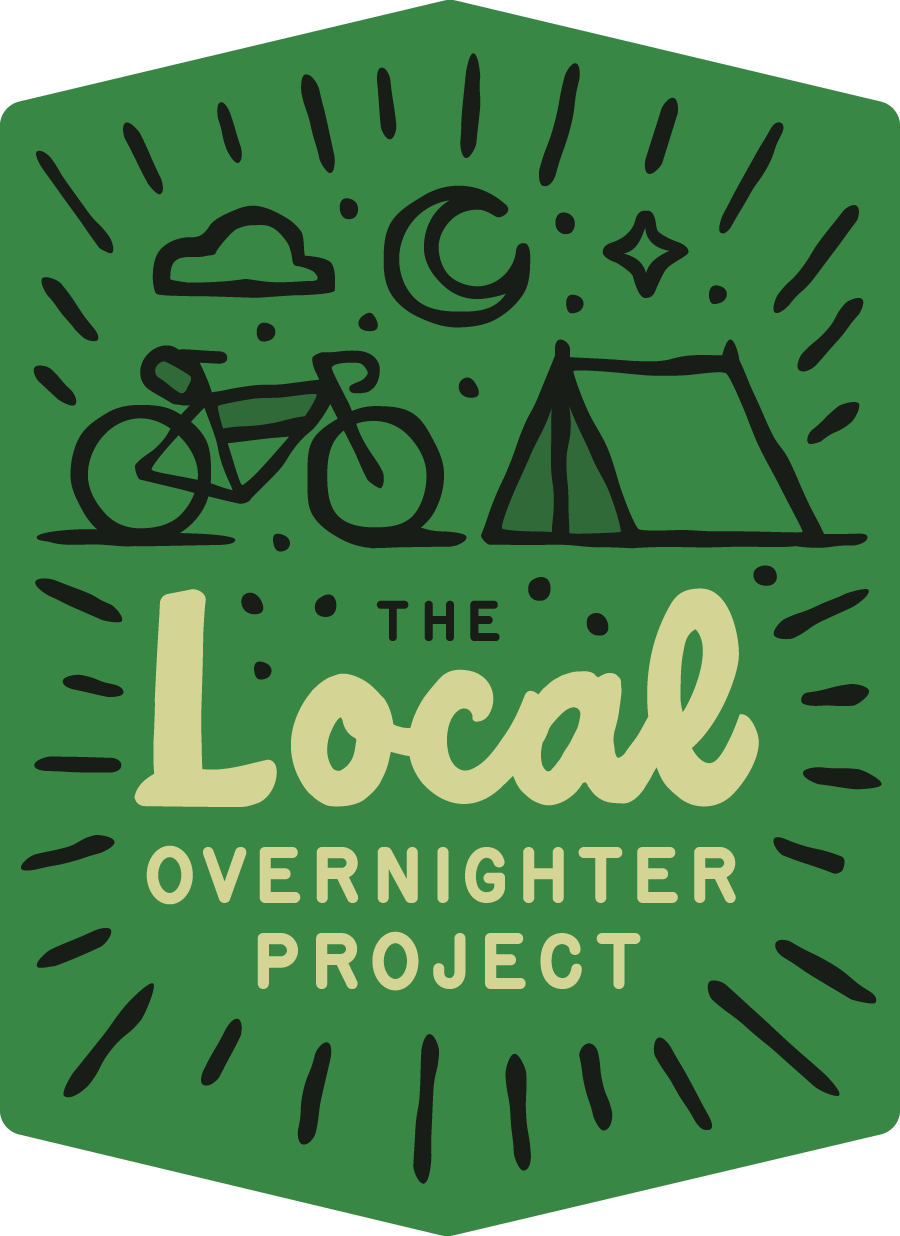 This route is part of the Local Overnighter Project, which was created to expand our growing list of worldwide bikepacking routes—the first and largest of its kind—and create an independent map and catalog of great bikepacking overnighters, curated by you, from your own backyard. Our goal is to have accessible routes from every town and city in the world. Learn More
This route is part of the Local Overnighter Project, which was created to expand our growing list of worldwide bikepacking routes—the first and largest of its kind—and create an independent map and catalog of great bikepacking overnighters, curated by you, from your own backyard. Our goal is to have accessible routes from every town and city in the world. Learn More
Submit Route Alert
As the leading creator and publisher of bikepacking routes, BIKEPACKING.com endeavors to maintain, improve, and advocate for our growing network of bikepacking routes all over the world. As such, our editorial team, route creators, and Route Stewards serve as mediators for route improvements and opportunities for connectivity, conservation, and community growth around these routes. To facilitate these efforts, we rely on our Bikepacking Collective and the greater bikepacking community to call attention to critical issues and opportunities that are discovered while riding these routes. If you have a vital issue or opportunity regarding this route that pertains to one of the subjects below, please let us know:
Highlights
Must Know
Camping
Food/H2O
Resources
- Spectacular views of the Southern Alps (Kā Tiritiri o te Moana) start before you even reach the carpark and only get better the further up the valley you climb.
- Cool off in sparkling alpine waters after your ride.
- Red Hut, a historic hut built in 1916 as part of a tourism venture – fully restored in 2003.
- Keep an eye out for the New Zealand Falcon (Kārearea).
- On a clear night be sure to stay up late to see the Milky Way without any light pollution.
- Stop for lunch in the shade of the beech forests that flank the valley.
- Want to climb a mountain while you’re here? Stay an extra few nights and explore the Dasler Pinicles!
- If you’re visiting from abroad be sure to check out the nearby Alps to Ocean ride (alps2ocean.com) Maybe even integrate the two!
- The Hopkins Valley is situated at the top of Lake Ohau. The carpark at the road-end is about an hour’s drive from Twizel or Omarama, a 2.5 hour drive from Wanaka or a 3 hour drive from Queenstown. Access to the carpark is by gravel road but is accessible is by any type of car, no 4WD needed.
- Spring to Fall is the best time of year to explore this area. Due to the numerous river crossings it pays to keep a close eye on the weather forecast leading up to your trip – heavy rains can make the river very dangerous and uncrossable. Following where 4WD vehicles cross the rivers will give you a good indication of the best places to cross. It is also advised to bring a completely dry change of clothes in the unlikely event of a dunking in the river.
- If you find yourself stuck in the valley with deteriorating conditions, there is a hiking trail on the true right side of the river that, while unridable, will safely lead you out of the valley without having to cross the river.
- The 4WD track beyond the Elcho Stream area can be difficult to follow and seemingly non-existent in places and can leave you picking your way through the rough riverbed. Fatter tires are an advantage here but even on 5” wide tires you will still end up pushing your bike through some sections. The upper reaches of the valley require even more bike pushing.
Huts can’t be booked in advance, instead operating on a first-come first-served basis and the valley is also popular with hunters and hikers. There are an almost unlimited number of spots to pitch a tent without issue.
- Monument Hut: Standard hut that sleeps 6 people, has a basic toilet and fire.
- Red Hut: Standard hut that sleeps 12 people, has a basic toilet and fire as well as a water tank.
- Elcho Hut: Standard hut that sleeps 12 people, has a basic toilet and fire.
- Cullers Hut: Standard hut that sleeps 4 people, has a basic toilet and fire.
- Dodger Hut: Standard hut that sleeps 4 people, has a basic toilet and fire as well as a water tank.
- Erceg Hut: Basic hut that sleeps 4 people, has a basic toilet and a water tank.
Huts and shelters are maintained by the Department of Conservation (DOC), and tickets for the huts must be pre-purchased from a DOC visitor centre, i-Site, YHA or any local outdoors store throughout New Zealand. Tickets are $5 NZD and the number of tickets required depends on the type of hut (a serviced hut is 3 tickets, a standard hut is 1 ticket; basic huts/bivvies are free). More info about the DOC hut system can be found here and here. Elcho hut is maintained by the New Zealand Alpine Club and costs $10 NZD per night. Information about how to pay for your stay in Elcho can be found in the hut itself.
Water is plentiful from the river. Sheep graze in some of the alpine meadows so it is generally better to take water from the side streams that come from smaller catchment areas. Most of the huts also have water tanks. Filtering and/or treatment is generally not required but is recommended. There are no shops near the trail start so bring with you all the food you will need.
Additional Resources
- Department of Conservation site on the Hopkins Valley: doc.govt.nz/parks-and-recreation
- Topographic Maps for all of New Zealand: topomap.co.nz
Terms of Use: As with each bikepacking route guide published on BIKEPACKING.com, should you choose to cycle this route, do so at your own risk. Prior to setting out check current local weather, conditions, and land/road closures. While riding, obey all public and private land use restrictions and rules, carry proper safety and navigational equipment, and of course, follow the #leavenotrace guidelines. The information found herein is simply a planning resource to be used as a point of inspiration in conjunction with your own due-diligence. In spite of the fact that this route, associated GPS track (GPX and maps), and all route guidelines were prepared under diligent research by the specified contributor and/or contributors, the accuracy of such and judgement of the author is not guaranteed. BIKEPACKING.com LLC, its partners, associates, and contributors are in no way liable for personal injury, damage to personal property, or any other such situation that might happen to individual riders cycling or following this route.
Please keep the conversation civil, constructive, and inclusive, or your comment will be removed.







